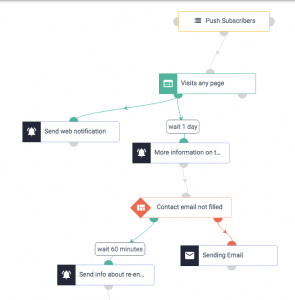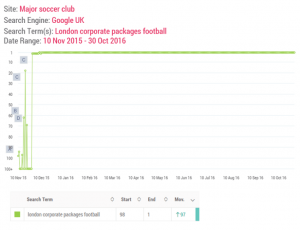Marketers must actively take part in deciding how to use AI within the organization. Here are three steps you can take today.
I’m amazed at how fast ChatGPT has progressed from “It’s the coolest thing ever” to “It’s going to take our jobs” to “We have to tweak it because it doesn’t have enough information” to “It’s ‘Terminator Genisys’ all over again.”
Many marketers are using ChatGPT to write subject lines. That’s okay for a starting position. But if that’s all you’re using it for, you’re missing a huge opportunity to solve some of your biggest marketing problems and elevate your marketing team’s role as a revenue and tech leader.
I know you have a lot on your plate right now, but with AI poised to be a game-changer, you need a voice in implementing AI and its associated technologies. As email marketers, we will work closely with AI in our companies. We can’t afford to wait and see what happens. If we don’t step up, martech could lead us down the wrong path.
3 steps to shape AI development and use
1. Experiment with AI across platforms
Did your ESP just add an AI-driven subject line generator? Great! But don’t stop there. Boxing AI as a subject line tool can mean you won’t use it to achieve a goal that has a greater downstream impact.
AI-generated content at scale could modify language to match unique segments or cohorts in your marketing efforts to recognize intent or activity. Subject line generation is a means to that end. It’s not the end.
Take some time to experiment with other uses for AI and discover how different platforms can deliver different results. With AI and associated technologies in their infancy, it’s important not to get stuck on one or two uses or systems.
In this preliminary stage, you can experiment on different platforms, including ChatGPT (OpenAI), Google’s Bard and Microsoft’s Bing. This will give you a robust idea of what you can do, what you can learn, and where you can apply results. The best way to achieve this is to develop a testing plan focusing on a task or goal that supports a marketing objective.
Next, get to know the platforms available to you and replicate your testing plan on all of them. Use both the free and paid versions of these platforms. I’ve used all three of the ones I’ve mentioned here, and I’m amazed at how different the answers are. Although it means doing extra work at this preliminary stage, you’ll learn what each platform can offer and develop a realistic vision of the future.
Learn all you can right now, and adapt as you go. This is not about lifting out subject-line or call-to-action alternatives and pasting them into your email template. You know your brand better than these platforms do, so you must use your AI results as a starting point for further testing.
2. Ask your vendors for their visions
Pull your vendors into conversations about their plans for this technology. Yes, ChatGPT is still in its infancy, but it’s growing up fast even as we try to define it. I am interested in knowing what my vendors are planning.
Another option: If your vendors have customer advisory boards, ask them if you could join. This will put you right in the middle of the conversation about planning in the most relevant sense.
If your vendors don’t plan to include AI or focus on a specific use like subject lines, it might be time to start an RFP and talk to other vendors that are farther down the innovation path.
3. Take a seat at the AI table
As an email marketer, you need to be in on the conversations happening at your company. You might even know more than others at the same table, so why not leverage that into a leadership position?
Email delivers the highest ROI of all your marketing channels. If I make the most money in my marketing work, I deserve a seat at the table. I can do content generation at scale. I have more touchable consumers. I have greater functionality and a proactive messaging path directly into the inbox. I don’t have to hope my customers find my emails — they’re right in their inboxes waiting for them.
Bring all the power and authority of email to bear in your AI conversations. The ideas you generated from Step 1 and Step 2 above will flow into this process and inform your discussions. You can use this knowledge to take control without waiting for your vendors or the industry to define the role of AI.
Wrapping up
For 20 years, we have been talking about dynamically inserting relevant content into messages to increase engagement. AI could get us there. But it will not work if we marketers don’t actively take part in deciding how to use it for its highest goals in marketing. We can’t be passive technology users. We must be active influencers on this path.
You can participate in this great movement by testing, leading conversations and learning how you can achieve your marketing goals with it and help your company prosper.
The post 3 steps to make AI work for you appeared first on MarTech.
MarTech(10)
Report Post




